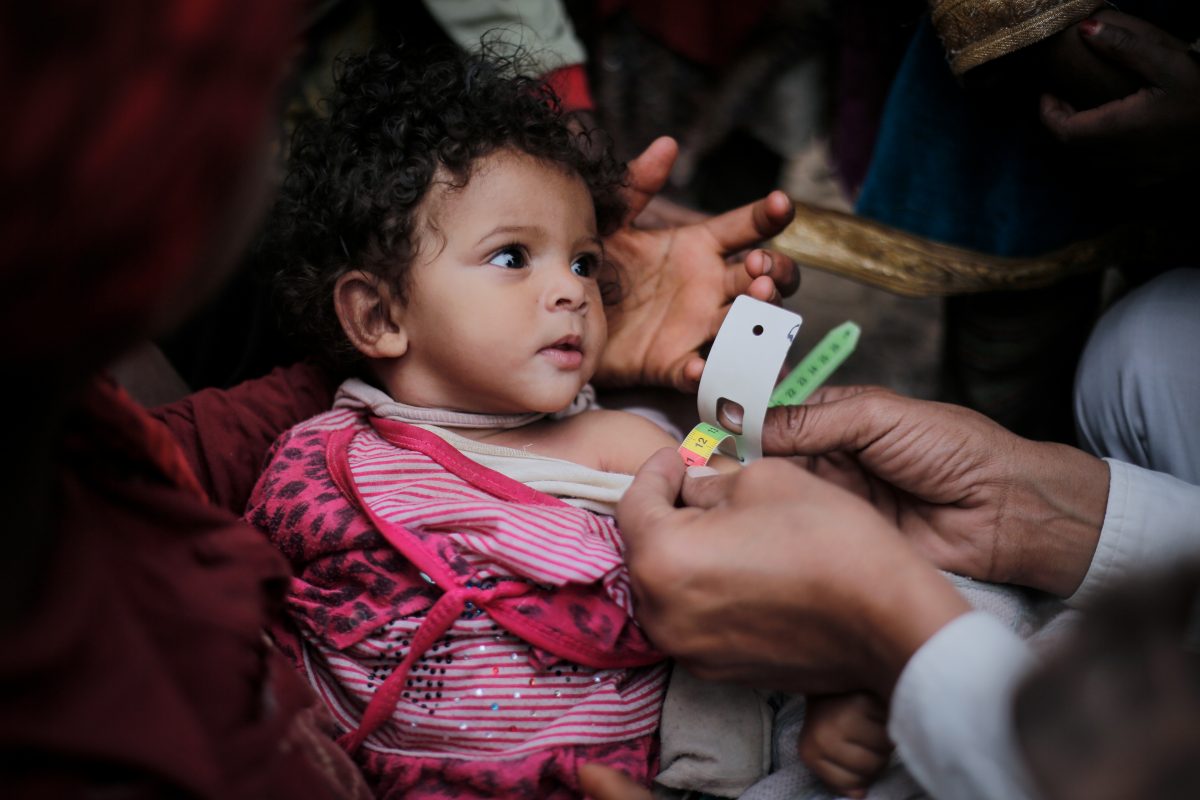 Video
Video
 Video
Video
Yemen continues to experience a prolonged political, humanitarian and development crisis in 2024.
The United Nations Office of the Coordination of Humanitarian Affairs (UNOCHA) says severe deterioration of economic conditions, damage to infrastructure and collapse of essential services will drive large-scale vulnerabilities and needs in 2024. Some of these drivers are causing significant risks, such as conflict, floods, drought, water scarcity and disease outbreaks.
Years of conflict and natural hazards have significantly exhausted Yemen’s healthcare system and infrastructure. This has resulted in the rise of vaccine-preventable diseases like measles. Technical and financial support is needed to improve immunization rates among children.
The World Food Programme (WFP) and the Food and Agriculture Organization of the UN (FAO) identified eight acute food insecurity “hotspots” of very high concern from November 2023 to April 2024, including Yemen. The agencies said that in Yemen, acute food insecurity “is expected to remain at critical levels, amid the protracted economic crisis worsened by an anticipated reduction in humanitarian assistance.”
Despite relative calm and commitment to a nationwide ceasefire, rising regional tensions and instability have shifted a fragile humanitarian, peace and mediation landscape.
(Photo: A medical practitioner uses a Mid Upper-Arm Circumference (MUAC) measuring tape on a child suffering from Severe Acute Malnutrition (SAM) in Bani Al-Harith, Sana’a, Yemen. (© UNICEF/UN057347/Almang)
Since 2015, a persistent conflict between the Internationally Recognized Government of Yemen (IRG), with support from a Saudi-led coalition, and the de-facto authority Ansarallah (also known as the Houthis) aligned with Iran has resulted in a severe economic and humanitarian crisis.
The conflicting parties agreed to a United Nations (UN)-mediated truce on April 2, 2022, which expired on Oct. 2, 2022. Since the end of the ceasefire, the country’s fighting has largely slowed.
As instability and tensions escalate in the Middle East due to the Gaza/Israel conflict, Houthi missile and drone attacks on Israel have increased the risks of conflict for Saudi Arabia. Attacks on vessels in the Red Sea have caused global shipping disruptions and, for the first time in March 2024, led to several deaths caused by missile strikes.
Continued attacks on commercial vessels passing through the Red Sea and Gulf of Aden led to U.S. sanctions and the designation of the Houthi as a Specially Designated Global Terrorist (SDGT) by the United States State Department. This comes at a time when Special Envoy Hans Grundberg reported a commitment to a nationwide ceasefire and restart of an intra-Yemeni political process by parties. Effective since Feb. 16, 2024, the designation has caused humanitarian agencies to signal concerns about potential humanitarian consequences and exacerbate civilian needs.
Sanctions targeting Yemen’s Houthi group also impact ordinary people struggling to access money transfers from outside the country. Remittances from abroad amount to $3.77 billion each year and are a lifeline for many.
Yemen relies heavily on imports for 85% of food, medical and fuel supplies.
Latest Updates

What we’re watching: Weekly disaster update, October 2

Complex humanitarian emergencies: How do donors prioritize when global needs are so great?

Announcing Global Recovery Fund Grants to Yemen and Venezuela
Key facts
- In 2024, 18.2 million people, more than 55% of the population, need humanitarian assistance and protection services in Yemen. This represents a 16% decrease compared to 2023.
- The most recent food insecurity projection found 1.27 million people in Integrated Food Security Phase Classification (IPC) Phase 4, or Emergency level, of food insecurity.
- Yemen remains one of the most contaminated countries globally by landmines and explosive remnants of war (ERW). In January 2024, the UN mission to support the Hudaydah Agreement recorded 10 landmines and ERW-related incidents, resulting in 12 civilian casualties in the Hudaydah governorate.
- From Jan. 1 to Dec. 16, 2023, the International Organization for Migration (IOM) Yemen tracked 59,016 people who experienced displacement at least once. Many of these individuals have been displaced multiple times over several years.
- Yemen has an INFORM Climate Change Risk Index for 2023 of 8.1, ranking third among the most vulnerable countries to climate change and least prepared for climate shocks, after Somalia and South Sudan.
- Almost 70% of children aged 3 years have not received the recommended essential vaccinations. This has led to more frequent outbreaks of vaccine-preventable diseases.
Climate shocks and natural hazards
Yemen faces high levels of disaster risk and is prone to climactic events, including severe drought and rainfalls that lead to flooding and water scarcity.
According to UNOCHA, “Localised natural disasters only worsen the humanitarian situation and present a major threat to the lives, livelihoods and well-being of many communities.”
In 2023, approximately 235,000 people were displaced due to natural hazards and severe weather events. UNOCHA found that between January and November 2023, 77% were displaced due to floods.
A cyclonic storm named Tej made landfall on the eastern Yemeni coast in October 2023. In addition to affecting over 60,000 people, the storm caused significant infrastructure damage. Parts of Yemen, an ordinarily dry country, saw eight times the average yearly rainfall from Tej.
The changing rainfall pattern in Yemen presents a climate-linked challenge. The changes result in insufficient rainfall, leading to droughts or excess rain and flooding.
Climate shocks such as droughts, floods and water scarcity can severely deteriorate livelihoods, given that agriculture employs almost 60% of Yemeni households. Droughts and water scarcity have resulted in an annual loss of 3-5% of arable land and a reduction of 40% in agricultural productivity. Low livelihoods can result in continued reliance on harmful coping strategies such as child marriage, school dropouts and labor, particularly among female-headed households.
Displacement
According to the 2024 Humanitarian Needs Overview (HNO), an estimated 4.5 million people, 14% of the population, are displaced in Yemen, while almost 31% have been displaced multiple times over many years.
Natural hazards and disasters, particularly cyclones, drought and flooding, are now the leading cause of new displacements in Yemen. While already on a downward trend, the truce in 2022 helped decrease displacement caused by armed conflict. According to the HNO, Yemen remains among the countries least prepared to adapt or mitigate the impact of climate-induced disasters.
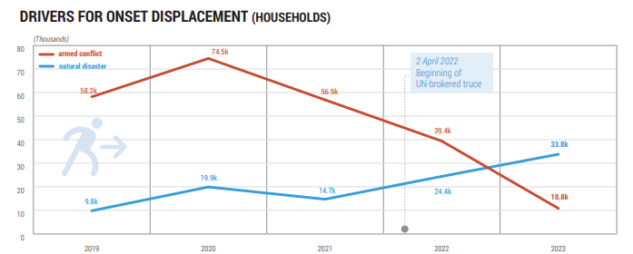
Displacement is an ongoing reality for people in Yemen. Between Jan. 1 and April 6, 2024 alone, IOM Yemen tracked 5,682 people displaced at least once, and in the first week of April, almost 85% of all IDP households reported a need for shelter. Prolonged or repeated displacement can affect education opportunities, livelihoods, health and protection.
Education
In 2024, 6.2 million children and teachers are expected to need assistance. Last year, UNOCHA reported that the education cluster reached over 4.8 million people, hitting 86% of its target goal.
Nine long years of conflict have left Yemen’s educational infrastructure in dire conditions. According to a Save the Children report, two in five Yemeni children are out of school. The report found economic hardships and insecurity were the main drivers of children dropping out. Over 3,700 schools were also damaged or repurposed.
Another report by IMPACT Initiatives found two of the most widely reported obstacles to educational access are the inability to afford costs associated with education and the “long distance to reach school and lack of transportation.”
Teachers also face overcrowded classrooms, lack training and learning materials, and experience attacks on educational institutions. Approximately 170,000 teachers in Houthi-controlled provinces have not received salaries or incentives since 2016.
According to the UN Children’s Fund (UNICEF) in December 2023, “Negative coping mechanisms are on the rise, including increased gender-based violence, sexual exploitation, child marriage, child labour, military recruitment of children and interruption of education.”
Protection considerations are critical for education actors to ensure children can safely access services without causing harm.
Food insecurity
Despite some improvements, Yemen remains one of the most food-insecure countries in the world. The most recent projection showed that the food insecurity situation was expected to deteriorate from January through February 2024 in most areas. This projection is based on seasonal trends and reduced humanitarian food assistance particularly in the Sana’a Based Authorities areas. A short reprieve is anticipated between March and May 2024 during Ramadhan and Eid festivities as Zakat, remittances and other transfers will increase.
The IPC’s acute food insecurity scale is broken down into five phases. Data is not always available for areas controlled by the Houthi, which makes it challenging to identify trends over time and the complete picture of food insecurity in the country. From October 2023 to February 2024, 4.5 million people in Yemen’s government-controlled areas will experience acute food insecurity.
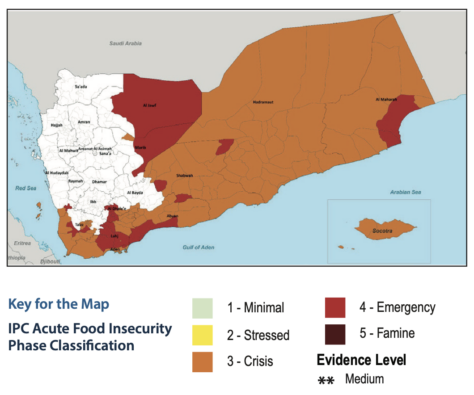
The issue of food affordability continued to play out in 2023. Analysis from a multi-agency household survey found that, “Availability of food supplies does not seem to be an issue affecting people’s food security. The total amount of food available in Yemen is dependent on local production, commercial imports, humanitarian food assistance, and food stocks/reserves.” Displaced people, Muhamasheen and female-led households were cited by the survey respondents as the members of the community most affected by food insecurity.
The persistence of food insecurity in Yemen occurs against the backdrop of funding cuts. The WFP was forced to reduce the assistance rations they distribute in mid-2023, providing only 40% of the standard food basket per cycle. In December 2023, WFP paused food distribution in Houthi-controlled areas due to limited funding and disagreements with the group. As of early 2024, WFP Yemen said it is facing an “increasingly dire funding situation, and is just 7 percent funded for the January – June 2024 six month period, with a net funding requirement of US$ 1.30 billion.”
In March 2024, UNOCHA warned of a surge in food insecurity and malnutrition in recent months. Progress made in the past two years was “at the risk of unraveling.”
Health
Affected communities in Yemen identified health services as one of their top priorities in a survey led by UNICEF in 2023.
The protracted nature of conflict in Yemen has severely decimated its healthcare structure and services, with 46% of facilities either partially operational or entirely out of service.
Nearly 17.8 million Yemenis have humanitarian health care needs, and 5 million children under five will require treatment for acute malnutrition in 2024. The dire health situation prompted the World Health Organization (WHO) to warn the fragile health system is overburdened and “edging closer to collapse.”
The country is experiencing an increase in vaccine-preventable diseases like measles. A lack of access to basic health services means routine immunizations are not possible for millions of children. In 2023, more than 50,795 people in Yemen had measles, and there were 568 deaths. In the last quarter of 2023, a surge in suspected cholera cases, risking an epidemic if action is not taken quickly, was also reported.
Persistent conflict and economic deterioration have compromised people’s access to health facilities. In February 2024, a study conducted in the Lahj governorate by Assessment Capacities Projects (ACAPS) found that households sought coping strategies such as relying on unqualified shopkeepers for health advice or using traditional and alternative healthcare to meet their basic health needs. Data from the study also supports a report by the International Committee of the Red Cross, which indicated members of women-headed households were hesitant to travel and seek healthcare due to safety reasons.
In addition, an estimated 7 million individuals need mental health support services, according to the United Nations Population Fund. Yemen currently has just 46 psychiatrists for the whole country.
Marginalized groups
Discriminatory societal attitudes toward women’s movement and economic and social engagement remain entrenched. In the 2021/2022 Women, Peace and Security Index by Georgetown Institute, Yemen was ranked in the bottom three countries concerning women’s inclusion, justice and security.
A study by Mwatana for Human Rights released on Aug. 30, 2022, found that incidents of gender-based violence (GBV) increased throughout the first seven years (the time period included in the study) of the conflict. Unfortunately, access to comprehensive GBV services is limited, and less than 5% of health facilities provide rape or GBV management services. More importantly, when general funding is reduced, GBV programming is among the first areas to be cut.
According to CARE International, over 30% of girls are married before the age of 18 due to the current dire economic situation. Additionally, “diminishing humanitarian aid and development funding are likely to result in increases in these numbers.”
The Muhamasheen (the Arabic term for marginalized) community is a Yemeni minority group representing around 10% of Yemen’s population. They have long endured discrimination, social exclusion and reduced access to public services, further compounded by intersecting identities, such as being displaced and/or women. Nearly 40% of Muhamasheen women have never attended school, and cases of GBV against Muhamasheen women are more prevalent.
In 2024, 2.7 million people with disabilities need humanitarian assistance. Normative and implementation gaps in Yemen’s legal framework continue to diminish the protection of minority and marginalized groups, including women and girls and people with disabilities.
Along with people with disabilities, the 2024 HNO found older persons also encounter difficulties accessing specialized services and live under precarious conditions with limited mobility.
According to HelpAge International in a March 2023 update, older people are particularly affected by high prices of basic food items and “many older women are also limiting their food intake so that their children and grandchildren can eat more instead.”
The humanitarian crisis severely impacts children. According to UNICEF, “The current humanitarian crisis in Yemen has increased the vulnerability of children and women to exploitation, violence and abuse, child labour, killing and maiming, recruitment and use of children by parties to the conflict as combatants and in various support roles, domestic and gender-based violence, child marriage and psychosocial distress.”
The most critical ongoing need is for unrestricted funding that addresses the needs outlined in the Yemen Humanitarian Response Plan. Unrestricted funding allows agencies working in Yemen to direct the funds to the places and clusters where it is most needed.
Climate and natural hazards
Niku Jafarnia, a researcher with CIVIC and author of Risking the Future: Climate Change, Environmental Destruction, and Conflict in Yemen, said: “Even if the conflict in Yemen were to end today, Yemenis will have to prepare for another battle: the fight against climate change…The country will bear the environmental scars of warfare in its soil and water sources for decades to come.”
Another critical need is funding for the reconstruction of infrastructure damaged in the flooding of summer 2022 and subsequent disasters in 2023. As extreme weather conditions become more frequent and intense, households, roads, hospitals, schools, electrical grids and other critical infrastructure must be rebuilt to higher standards to be better able to resist the effects of climate change.
Considering the increasing levels of climate-induced crises and shocks, preparedness and minimizing disaster impact are essential. In 2024, humanitarian and development agencies aim to promote climate-resilient interventions, advance durable solutions and mainstream climate into various cluster activities. This comes in response to more than 10 area-based consultation workshops where participants raised climate change and its effects as a priority.
Food insecurity
As in the Horn of Africa, which is also experiencing protracted conflict and severe drought, a two-track approach that addresses the immediate humanitarian needs of people in Yemen while investing in longer-term programs that strengthen resilience is needed.
The 2024 Humanitarian Response Plan (HRP) outlines the Food Security and Agriculture Cluster’s objectives, included below, which align with the two-track approach. To achieve these objectives, the Cluster requires $1.36 billion to reach 12.8 million people.
- Increase availability and access to secure, safe and lifesaving food for the most vulnerable households through emergency assistance.
- Protect, restore and promote livelihoods and build assets to enhance resilience.
Health
Funding for direct medical care is badly needed, particularly to support those experiencing cholera and other transmissible diseases. Support for improving access to health services to support improved vaccination rates is also needed. Many people are also suffering from the medical side effects of malnutrition, requiring additional care because of insufficient food supplies.
Humanitarian agencies are working to strengthen the fragile public health system and provide health services during the current cholera and polio outbreaks despite a funding shortage of almost 55% in 2023.
In late February 2024, a four-day polio immunization campaign by UNICEF, WHO and the government of Yemen reached more than 1.29 million children. Wide-scale immunization campaigns can boost population immunity and deter dangerous misinformation and disinformation about vaccines.
In addition to funding, fuel shortages have caused mass power outages. Most recently, the city of Aden saw electricity cuts of up to eight hours per day in January 2024. With high summer temperatures, the lack of regular access to electricity can produce a heat index dangerous to human health. To address the dire need for alternative power sources to maintain health facilities, the United Nations Development Programme rolled out a renewable energy project to install solar panels and batteries at hospitals to ensure electricity is consistent and services are provided without disruptions caused by power outages.
One of the underlying drivers of malnutrition is the lack of access to WASH and health services. Improving access to safe water and sanitation will have a multiplying impact on food security and health. Distribution of medical supplies, health infrastructure restoration, vaccine deployment support and continued investment in community health workers are other opportunities for funders.
In 2024, the health cluster aims to employ an area-based approach and ensure equitable, inclusive, sustainable and gender-sensitive programming in their engagements.
Livelihoods
Support for livelihood development will provide some of the best return on investment. When people are given the opportunity to support themselves, they have some financial stability, which in turn allows them to have sustained access to healthy food and housing and to re-invest in their communities.
Increasing the number of people who are self-sufficient or even produce extra resources will reduce the number of people reliant on international aid. Improving livelihoods also allows families and communities to start their recovery from prolonged shocks, meet immediate and longer-term needs, and promote resilience to future shocks, including disasters.
For example, a grant from Mercy Corps’ CDP-funded “Pathway to Sustainable Livelihoods” program allowed a university student with disability to buy a mobile cart to sell sweets, toiletries and stationary next to her neighborhood school and a busy market. The student said, “With the profits from my cart, I am now earning enough to pay for my school fees, my parents’ medicine and our everyday needs.”
In 2023, humanitarians reached 2.89 million people with cash-based interventions, disbursing $201.7 million. Looking at multi-purpose Cash Assistance (MPCA) specifically, 704,000 people were reached and $51.28 million distributed. MPCA can help strengthen local markets and livelihood opportunities.
In addition to supporting local economies, cash is cheaper than in-kind donations, flexible and gives people dignity of choice over their decisions.
Shelter
Due to its elevation, Yemen is colder than most of the Arab world. Temperatures in its highlands can dip below freezing in the winter months, making immediate shelter assistance critical each winter.
In 2024, long-term recovery and infrastructure building remain top priorities for humanitarian actors. Shelter partners aim to ensure timely life-saving emergency shelter and non-food items, prioritize feasible cash-based interventions and support sustainable shelter solutions.
According to UNOCHA, the shelter cluster only reached 29% of the 3.3 million people targeted in 2023 and received 34% of the $250 million required. In 2024, the cluster anticipates a significant funding shortfall following market assessments and a lack of development actors.
Support for marginalized groups
One of the 2024 strategic objectives is to “Improve the protection and dignity of the most vulnerable crisis-affected population by ensuring timely, principled, and non-discriminatory humanitarian assistance and solutions by promoting international norms and standards.”
In their report Fragile Walls: A study of domestic violence against women during the war in Yemen, Mwatana’s recommendations to international organizations and donors include ensuring the sustainability of projects over time, supporting research and survey studies on violence against women for purposes of influencing policies, and putting pressure on authorities to work toward effective reforms in law enforcement and judicial institutions.
Despite the number of migrants arriving in Yemen in 2023 nearly tripling since 2021, the number has remained low in recent months (1,744 in February 2024). Between October and December 2023, women and girls made up roughly 36% of all new arrivals. IOM has previously said, “The number of female migrants being exploited abused by other migrants and smugglers has been worrying.”
Migrants, refugees and asylum seekers who are en route to Saudi Arabia and the Gulf States are mostly Ethiopian nationals. Migrants, refugees and asylum seekers represent some of the most marginalized groups in Yemen and have limited prospects for becoming self-reliant, need access to basic services and are subject to general exclusion from community-based protection and local systems of support.
Inclusion in the design and implementation of humanitarian programming for women and children, people with disabilities, migrants, and older adults is essential and helps ensure that humanitarian assistance is relevant and targeted. Addressing forced eviction, housing tenure insecurity, negative coping mechanisms, mental health and psychosocial support, and protection concerns will help reduce vulnerability.
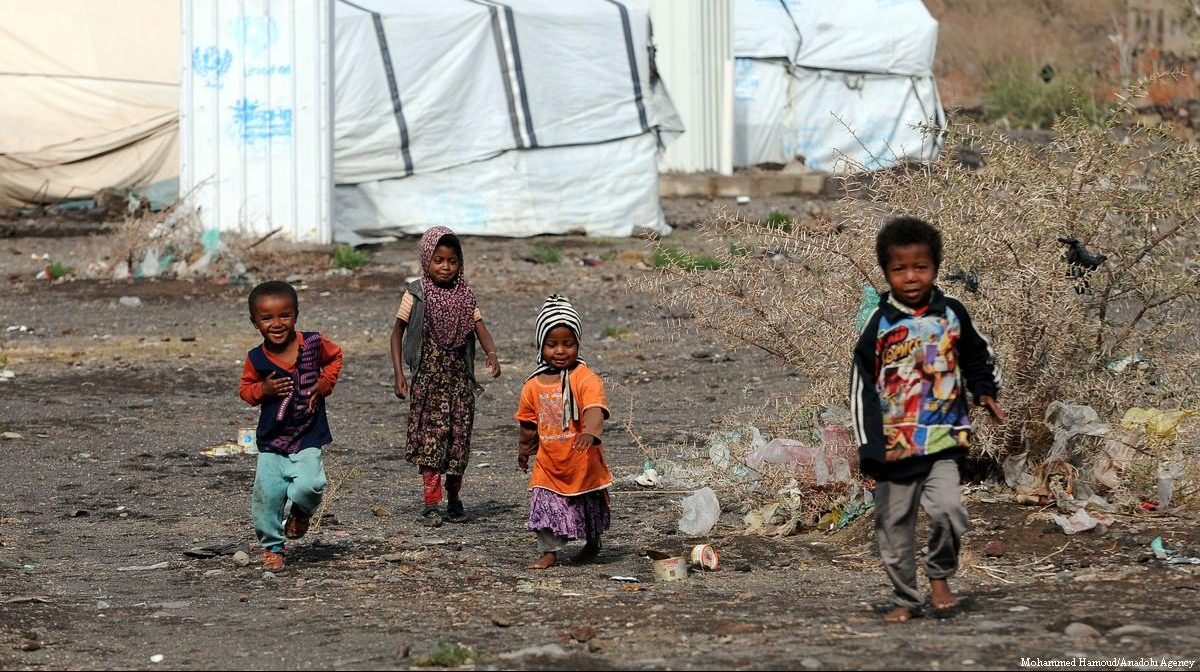
CDP’s Global Recovery Fund provides donors with opportunities to meet the ongoing and ever-expanding challenges presented by global crises. CDP also has a Disaster Recovery Fund that provides the chance for donors to meet the needs of those affected by this humanitarian crisis in the U.S. and territories.
Contact CDP
Philanthropic contributions
If you would like to make a donation to the CDP Global Recovery Fund, need help with your disaster-giving strategy or want to share how you’re responding to this disaster, please contact development.
Recovery updates
If you are a responding NGO, please send updates on how you are working on recovery from this disaster to Tanya Gulliver-Garcia. We welcome the republication of our content. Please credit the Center for Disaster Philanthropy.
Philanthropic and government support
CDP awarded Project HOPE $500,000 from the COVID-19 Fund in 2022 to extend the successful mental health and resilience training for COVID-19 frontline health workers in 11 countries, including Yemen. Leveraging existing resources developed with CDP support, Project Hope will scale the program to reach an additional 16,000 healthcare workers across countries experiencing complex humanitarian emergencies.
CDP awarded Médecins Sans Frontières (MSF) $250,000 from the Global Recovery Fund in 2020 to provide maternal and pediatric healthcare and operational support of surgical facilities that focus on war surgery and emergency obstetric care. MSF programs focus on the hardest-hit areas of Yemen, especially those in or near conflict zones. MSF teams work in 12 hospitals and health centers across the country and support an additional 20 health facilities in 12 governorates: Abyan, Aden, Amran, Hajjah, Hodeidah, Ibb, Lahj, Saada, Sana’a, Shabwah, Taiz and Marib. There is $50,000 designated for working with Health Ministries to enhance and strengthen infection prevention and control (IPC) measures related to the COVID-19 pandemic response.
CDP awarded $249,935 to Mercy Corps from the Global Recovery Fund in 2020 to increase market activity in the Taiz governorate of Yemen by strengthening small and micro enterprises through access to financial services, including grants and loans, as well as in-person business training and mentorship. This program also supports local communities with increased access to functional market systems that create competitive options when purchasing goods and services and more accessibility within their localities.
On Feb. 1, 2024, 219 humanitarian partners launched a $2.7 billion humanitarian appeal as part of the 2024 Humanitarian Response Plan (HRP) for Yemen. So far, only $260 million has been invested to provide aid to 11.2 million people out of 18.2 million in need.
The HRP has seen a huge fall in funding compared to previous years. Humanitarian partners saw the highest funding requirement for Yemen in the 2023 HRP, which required $4.3 billion to reach 17.4 million people. As of April 10, just 40% of it was secured.
In February 2024, the European Union (EU) organized 13 humanitarian air bridges to deliver vital medical supplies in response to life-threatening infectious disease outbreaks and health emergencies. In 2023, the EU allocated over $155 million in humanitarian aid to Yemen, with a focus on the most vulnerable and disadvantaged.
The High-Level Pledging Event on the Humanitarian Crisis in Yemen resulted in financial announcements from donors totaling $1.16 billion as of March 5, 2023. The U.S. commitment of $444.21 million was the largest. The reaction from humanitarian organizations, including the International Rescue Committee and Oxfam, to these donor announcements included calls for more to be done and for the international community not to leave Yemen behind.
Resources
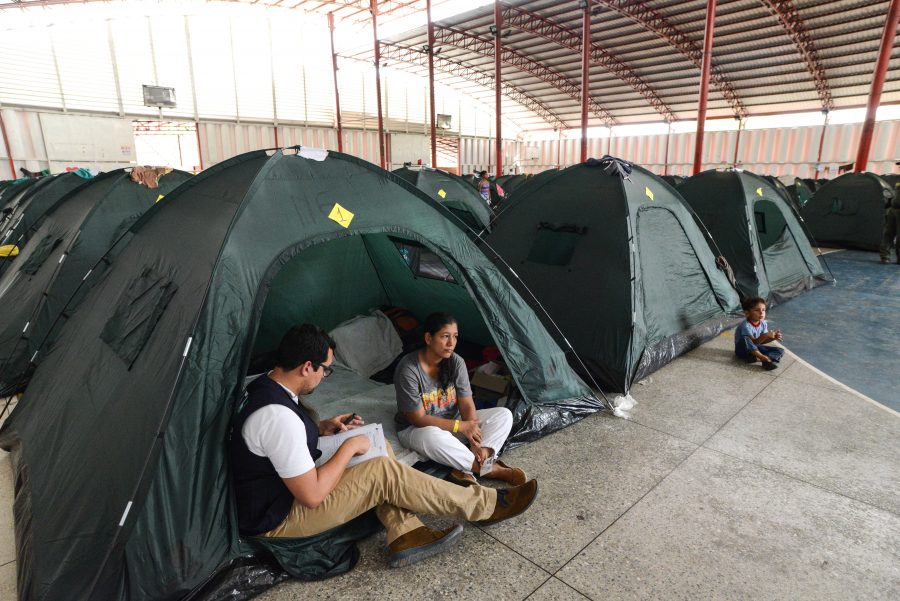
Complex Humanitarian Emergencies
CHEs involve an acute emergency layered over ongoing instability. Multiple scenarios can cause CHEs, like the civil wars in Syria and Yemen, the man-made political crisis in Venezuela, or the conflict in Ukraine.

Famine
According to the United Nations’ definition, a “famine” has taken hold when: at least 20 percent of households in an area face extreme food shortages; more than two people in 10,000 are dying each day (from both lack of food and reduced immunity to disease); and more than 30 percent of the population is experiencing acute malnutrition.
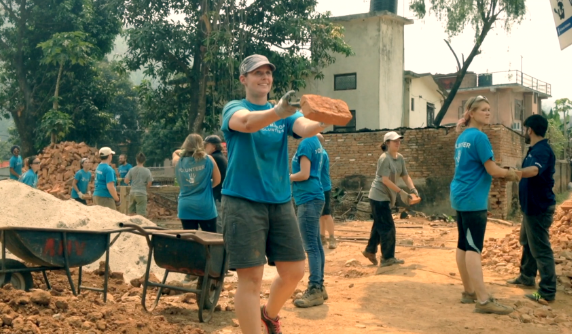
Resilience
The Latin root of “resilience” means to bounce back, but every field has its own definition and most individuals within each discipline will define it differently. Learn more.